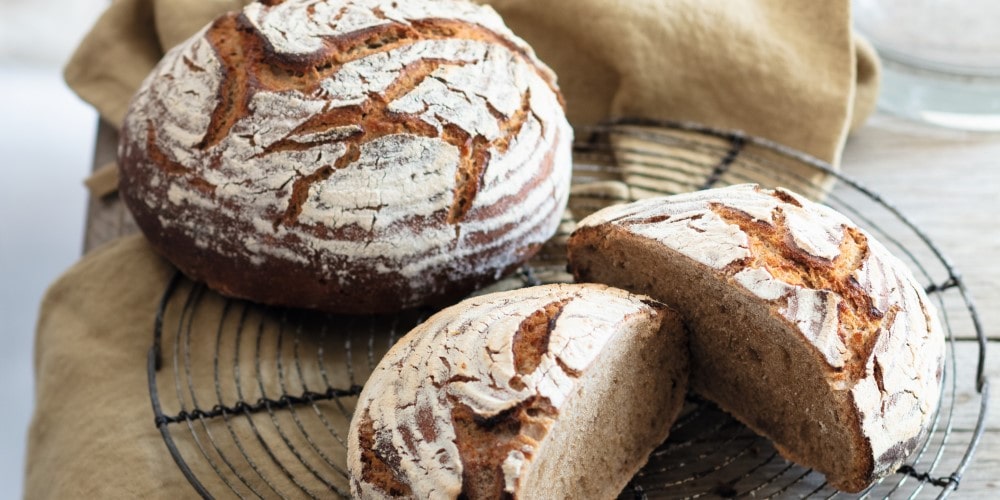
Tourte de seigle / Auvergne Rye Loaf
Makes: 1 large or 2 small loaves
Active time: 15 minutes
Bulk fermentation: 14–18 hours
Proofing: 1–2 hours
Cooking: 40 minutes
Originating from regions around Auvergne, the Alps, Switzerland and the South of Germany, this Auvergne rye loaf is made from 100% rye flour and is 100% delicious!
Ingredients
- 1¾ tsp (0.3 oz./9 g) salt
- Scant 1½ cups (12.5 oz./350 g) lukewarm water
- 4¾ cups (1 lb. 2 oz./500 g) rye flour
- 5.25 oz. (150 g) refreshed levain
Directions
1A day before baking, place the salt, water, flour, and levain, in this order, in the bowl of a stand mixer fitted with the paddle attachment. Mix for 3 minutes on speed 1. Alternatively, combine the ingredients with your hands. The dough will be very sticky.
2Cover the bowl tightly or transfer dough to an airtight container. Let rest in the refrigerator for 14–18 hours (bulk fermentation*).
3The next day, dust the rim of the bowl with flour and gently ease the dough onto a well-floured work surface with the help of a bowl scraper.
4For two small loaves, divide the dough into two equal pieces. Shape dough into a loose ball without folding it. Place in a flour-dusted banneton or a large bowl lined with a well-floured towel.
5Cover and let rise at room temperature for 1–2 hours (proofing*).
6Toward the end of the rising time, place a rack at the lowest oven position and place another rack directly above it. Place an empty heavy-duty baking sheet, oven-safe skillet, or drip pan on the lower rack, and a baking stone or heavy-duty baking sheet on the upper rack, and preheat the oven to 500°F (260°C/Gas Mark 10). Bring 1 cup (250 ml) of water to a simmer.
7When the dough passes the poke test* (SEE BELOW), quickly invert the banneton over the floured peel and slide the dough onto the baking stone or sheet in the oven.
8Carefully pour the simmering water into the baking sheet, skillet, or drip pan to create steam and quickly close the oven door.
9Bake for 20 minutes at 500°F (260°C/Gas Mark 10), then lower the oven temperature to 430°F (220°C/Gas Mark 7). Continue to bake for an additional 20 minutes, until the bread is deeply golden and makes a hollow sound when tapped on the bottom.
10Remove the bread from the oven and place it on a rack to cool.
POKE TEST
- If the proofing time is too short, the dough won’t build up enough CO2 to rise correctly during baking. Conversely, if the proofing time is too long, the gluten network weakens and the bread may fall during baking. Even professional bakers use the poke test to evaluate the dough’s resistance and determine when it is ready for the oven. Gently press your finger about ½ in. (1 cm) into the dough. If the dough is ready to bake, it will spring back slowly but retain a small indentation where you poked it. If no indentation forms, the dough is not ready; leave it to proof a little longer. If the indentation doesn’t spring back at all, it’s too late—the dough is over-proofed.
Extracted from Upper Crust: Homemade Bread the French Way by Marie-Laure Fréchet(Flammarion, 2021).
Photography © Valérie Lhomme.
Share to: Facebook Twitter LinkedIn Email
More in Auvergne, Baking, Bread, Flour, Main, Recipe, Snack, Starter



